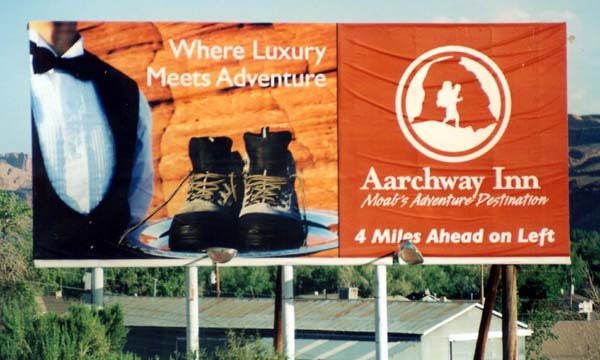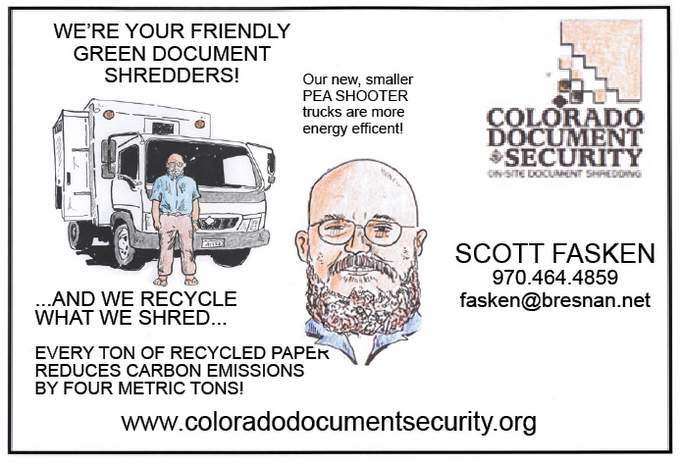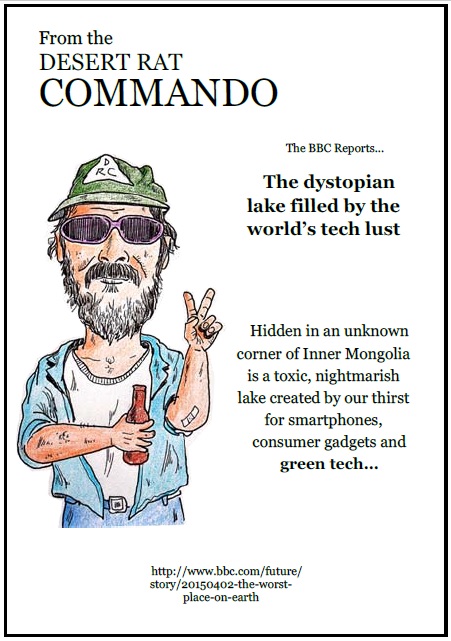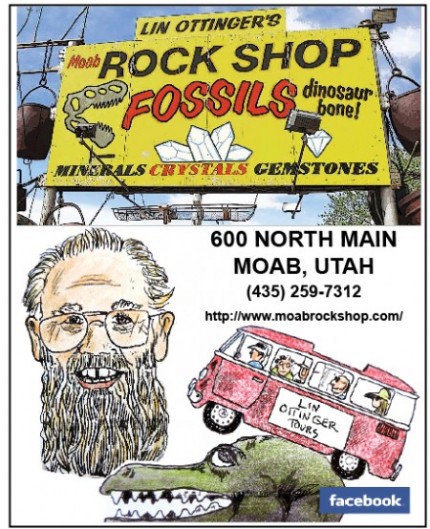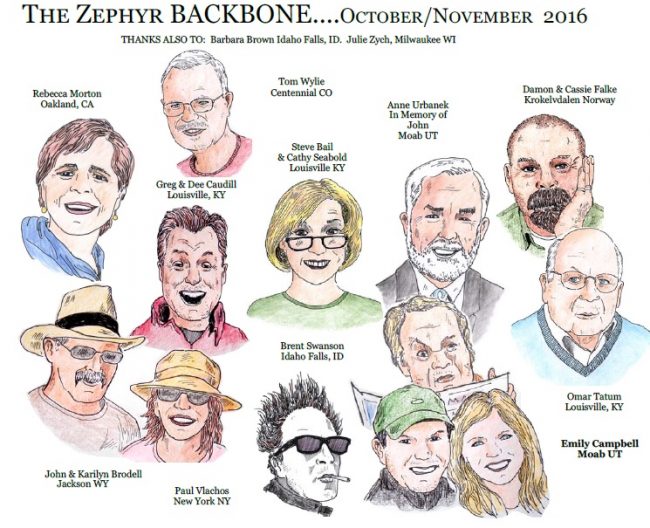From the OCTOBER 1999 ‘Take It or Leave It’…
This seems to have been a bad summer for a lot of Moab merchants. Many Main Street businesses are reporting drops in sales. There is genuine concern out there that tourism is falling off, although visitation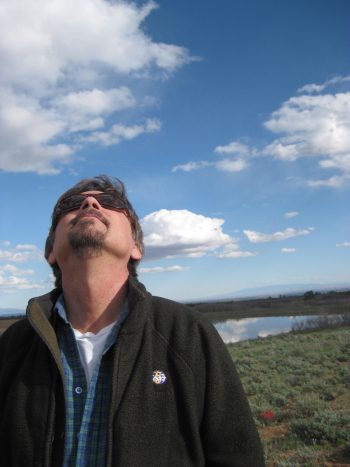 increases at Arches would hardly support such a notion. At the same time, Moab has been getting some negative press lately. From The Salt Lake Tribune to magazines like Inside. Outside..Southwest, we seem to have lost our charm.
increases at Arches would hardly support such a notion. At the same time, Moab has been getting some negative press lately. From The Salt Lake Tribune to magazines like Inside. Outside..Southwest, we seem to have lost our charm.
What a surprise.
Rob Schultheis, in Inside. Outside, wrote that “Moab doesn’t look like it fell off the back of a truck anymore; now it look like it fell off a thousand trucks. It’s Big Sprawl instead of Little Sprawl. And boy are there a lot of people there. People and stuff. Too much of both.”
For the purely economics-minded, profit/loss, bottom line type, the problem in Moab lately is that there is more stuff than there are people to buy the stuff. The town is overbuilt. There are more retail businesses than can survive a fluctuating tourist economy (and in a tourist economy, fluctuation IS the norm).
And most importantly, we have lost the weird, funky charm that made us an attraction in the first place.
Once again, I think it’s worth remembering what Moab was like ten years ago. At the turn of the last decade, Moab was an ex-uranium town that had fallen on some hard times. A couple of ex-miners named Bill and Robin Groff were the unlikely promoters of a bicycle shop and the sport of mountain biking took off like a rocket. While the locals (including this grouch) grumbled and groaned about these lycra-clad freaks, it certainly made for interesting conversation.
Main Street was still predominated by locally-owned businesses and, best of all, locally owned restaurants and cafes’. There wasn’t a Big Mac or a Whopper to be found in Moab. In 1989, I think there were about ten motels in town. We had wonderful and colorful politicians like Jimmie Walker and David Knutson who, even though I disagreed with them about 90% of the time, still managed to stimulate the electorate and keep everyone involved and plugged into the political process (can anyone today even name all the members of the city and county council?).
We were an ugly town, but in an honest and unpretentious way. And that is why people loved us–because we were so weird. We developed a certain cachet that became known throughout the land. Our cachet was our ugly, honest weirdness.
But cash killed our cachet.
We should have all known this would happen and it would probably have taken a wise and benevolent dictator to prevent it. But now the mainstay of our tourist economy, the regularly returning out-of-town visitors, come here and look at all the franchise pre-fab food shops and the modular motels and the goofy chairlifts and shake their heads and wonder where else they can go. Are there any honest weird tourist towns left out there?
If there are, and we find them, they won’t be weird for long. They’ll look just like us.
And that is the catch in having a cachet.
October 2007…
FINALLY…SUWA CALLS IT WHAT IT IS:
WILDERNE$$
…Jim Stiles
If you are a regular reader of The Zephyr or if you’ve had a chance to read my book, Brave New West, you know that I’ve had a long running disagreement with the mainstream environmental community in Utah and elsewhere over the impacts of the “amenities economy” and their responsibility to deal with those impacts.
The response from my old friends has been bewildering. Over a decade ago, they touted the amenities economy as a solution to the economic woes of the rural west. On the other hand, they’ve refused to link the exploitation of beauty itself to their quest for a wilderness bill and have steadfastly turned a blind eye to the impacts that eco-tourism creates. Or they insist that they have tried to mitigate these problems but that the “amenities economy” is something bigger than they can deal with. Take your pick.
As recently as last year, in High Country News, SUWA’s executive director Scott Groene explained, “The environmental movement has not advocated for this new economy…We have raised concerns about guidebooks. We have raised concerns about agencies creating user areas that will only draw more use. But the new economy is being driven by forces that are far greater than we are.”
Well that’s not exactly true. They have protested creating user areas that expand ATV use (and I agree wholeheartedly) but they duck and cover otherwise. As for their opposition to guide books, the staff at SUWA publicly opposed them a decade ago. In an article in the Salt Lake Tribune in 1995, Groene even said, “We have not actually come out yet and started burning guidebooks, but given our goals of trying to protect the land, we felt we had to adopt this policy to be consistent in our position.”
Then their board overruled them. Not only did they do a 180 degree turn, SUWA hired one of Utah’s most prolific guidebook writers, Steve Allen, to tour the country on its behalf, with an almost embarrassingly self-promoting slide show called, “Canyoneering Chronicles: The Legend Speaks.” So much for “being consistent in our position.”
But now, finally, it appears environmentalists in Utah are ready to embrace the amenities economy publicly and even acknowledge that the money generated by all this madness makes their job easier.
According to an August KCPW public radio story, “The Outdoor Industry Foundation says outdoor recreation has an annual economic impact of $6 billion a year in Utah and accounts for 65,000 jobs. That’s making state officials more receptive to conserving wilderness, says Scott Groene of the Southern Utah Wilderness Alliance.”
In KCPW’s interview, Groene explained, “When the Outdoor Industry a couple years ago spoke up about the importance of their industry and threatened to pull the [Outdoor Retailer] tradeshow from Salt Lake City, they got the governor’s attention. And it changed the debate from one that protecting lands would devastate local economies to not only would they not devastate local economies but there was actually a benefit to protecting lands.”
According to the KCPW article, “Groene says being eco-friendly isn’t just for activists like SUWA. It’s also good business.”
So finally, we’ve located the bottom line. In fact, according to SUWA, the bottom line for wilderness really is…the bottom line. Those “far greater” market forces that Scott complained about just a year ago, are now the same forces he and the environmental community finally embrace.
It’s why, with a heavy heart, I spell it “wilderne$$.”
To read the PDF version of this article, click here.
To comment, scroll to the bottom of the page.
Don’t forget about the Zephyr ads! All links are hot!

